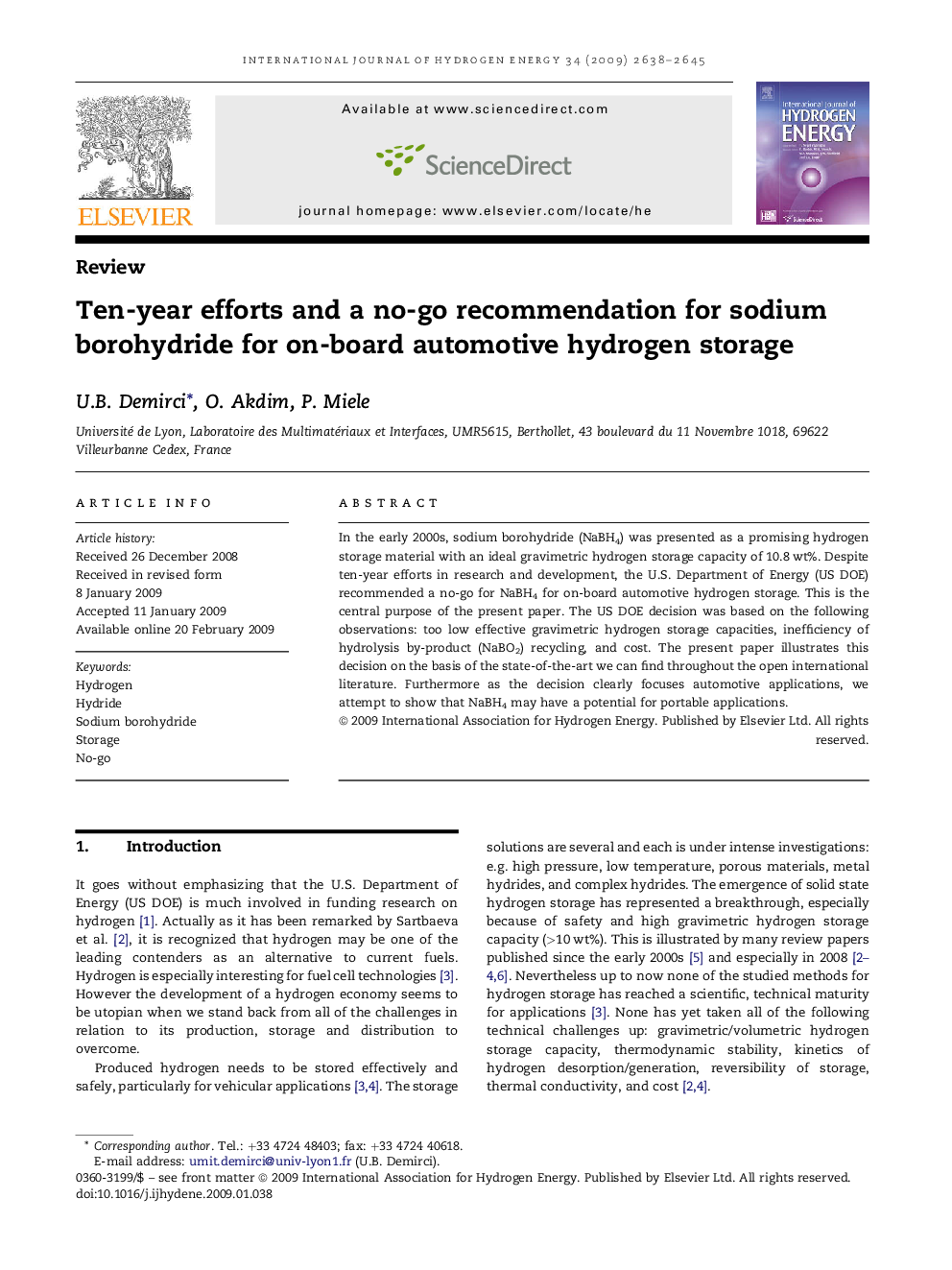| Article ID | Journal | Published Year | Pages | File Type |
|---|---|---|---|---|
| 1281195 | International Journal of Hydrogen Energy | 2009 | 8 Pages |
In the early 2000s, sodium borohydride (NaBH4) was presented as a promising hydrogen storage material with an ideal gravimetric hydrogen storage capacity of 10.8 wt%. Despite ten-year efforts in research and development, the U.S. Department of Energy (US DOE) recommended a no-go for NaBH4 for on-board automotive hydrogen storage. This is the central purpose of the present paper. The US DOE decision was based on the following observations: too low effective gravimetric hydrogen storage capacities, inefficiency of hydrolysis by-product (NaBO2) recycling, and cost. The present paper illustrates this decision on the basis of the state-of-the-art we can find throughout the open international literature. Furthermore as the decision clearly focuses automotive applications, we attempt to show that NaBH4 may have a potential for portable applications.
